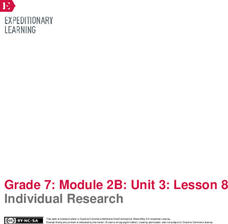Curated OER
Quit Smoking-Together We Can Do It!
Students explore how tobacco threatens the health of smokers and non-smokers. They research smoking and second hand smoke using the Internet. Students create a Quit Smoking brochure. They present a computer slide show to describe how...
Curated OER
comparison of Two Gender Sports Teams
Students gather data on sports team and create a box and whisper plot. In this data collection lesson, students find the median, the quartile range, and relationships between variables.
Curated OER
Racism, Gender, Ethnicity, and Aesthetics in the Art of Graffiti
Students describe how graffiti is a part of everyday culture. They develop basic vocabulary terms for thinking and writing about graffiti and make and justify judgments about aesthetics qualities in graffiti art. They compare and...
Curated OER
Tolerance: Gender Issues
Young scholars explore why some professions have been gender-dominant in the past. In this lesson plan, students identify some professions that have typically had one specific gender employed in the past, then research that job to see...
Curated OER
Estimating Loggerhead Hatchling Gender Ratios
Young scholars study sea turtles and the concept of temperature-dependent sex determination (TSD). Using a specific set of temperature data, they determine the probable sex of a nest of sea turtle hatchlings and then determine the...
Curated OER
Tracking Satellites Using Latitude and Longitude
Students participate in activities based upon the concepts of latitude and longitude. They apply the fact that technology can be used in our society for a variety of uses. This should help students reflect upon the role of technology.
Curated OER
Depicting Women and Class in a Global Society
Students analyze the evolution of women's work from the 19th century to present day and create artwork depicting women. In this women's roles instructional activity, students compare and contrast the use of space and color in the two...
Curated OER
Food and Energy
How many calories are needed each day? What foods have good calories? What happens to calories that don't get used? How many calories are in the different kinds of foods and drinks? How many calories do I need to do a certain activity?...
Brooklyn Museum
HIDE/SEEK: Difference and Desire in American Portraiture
Visual arts lessons don't always mean the children need to make art. Here, they will practice using their visual literacy skills to analyze four images through the compare and contrast method. The first two images deal with gender...
EngageNY
Setting a Purpose for Research: Introduction to Media Literacy
What does that picture say? Young historians take a close look at a British advertisement from 1890 to determine the role of gender in advertising. They discuss the implications about women portrayed in the images. Pupils then further...
EngageNY
Individual Research
Class members choose an ad they want to analyze for their performance task. They then read specific text based on the ad they chose. The instructor guides learners through a Model Research Synthesis document in which they try to...
PBS
Amelia Earhart: Aviator, Record-Breaker, and Activist
Fly through the gender barrier! Scholars investigate the impact Amelia Earhart had on American aviation and society. After watching a brief biographical video, learners take a look at primary documents to gain insight into her intriguing...
PBS
The Lowdown — Examining California's Prison System: Real-World Ratio
Free yourself from the shackles of traditional math lessons. Young mathematicians investigate race, gender, and age differences in California's prison system. They use provided graphics to compare the prison population with the state's...
Helena-West Helena School District
I Know Why the Caged Bird Sings Instructional Unit Plan
Maya Angelou's first autobiography, I Know Why the Caged Bird Sings, demonstrates both the author's exemplary writing and the themes of gender and racial injustice that perpetuate beyond the limits of the 20th century. Use a...
Curated OER
Population Pyramids
Students explain the significance of population trends on world regions. They define relevant population vocabulary and examine age-gender patterns at various scales.
Curated OER
Whose Is It? (Pronouns and Antecedents)
Define and explore pronouns and antecedents. Young writers read and complete a worksheet using pronouns and correct antecedents. The worksheet is not included but can be easily found online and then dispersed as homework (insert evil...
Curated OER
Cultural Diversity
Introducing the topic of cultural diversity and the social issues surrounding it, this presentation will get your students thinking about stereotypes involving race, gender, and sexual orientation. Affirmative action and positive and...
Curated OER
The Fight for Bread and Roses
Students examine events leading up to the Lawrence Strike. They explore the differences in class relate to the strike. They also examine the gender differences related to the strike.
Curated OER
Classroom demographics
Students use strategies to read and comprehend words and material. The use of technology is the backbone of this activity and is essential for implementation.
Curated OER
Basic Ideas of Inheritance
Students enter personal information into a database. The information is used to reinforce the ideas of inheritance that is found in 1st Grade Science. Access to technology is essential for this lesson. Adding the use of a mirror for...
Curated OER
Getting To Know You
Students use personal information to enter into a teacher generated database. The focus is upon name recognition and promoting socialization with classmates. Word recognition is emphasized with the simple development of basic computer...
Curated OER
The Industrial Revolution
Tenth graders analyze the impact (costs/benefits) of the Industrial Revolution on various groups of people in society (gender, children, socio-economic class, etc.). They then evaluate the impact of industrialization on the environment.
Curated OER
Whether/Weather/Wether
Is it whether, weather, or wether? Learners explore the differences between these three words using examples and descriptions. They conclude by taking an interactive test.
Curated OER
Mosetsana
Learners read and discuss a poem about the issues of gender, education, and family written by a Peace Corps Volunteer serving in South Africa. In this poetry activity, students read the poem 'Moetsana' and discuss the issues South...























